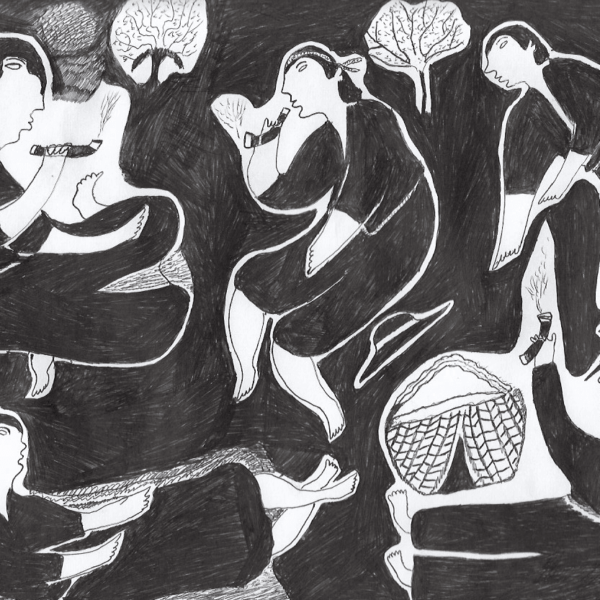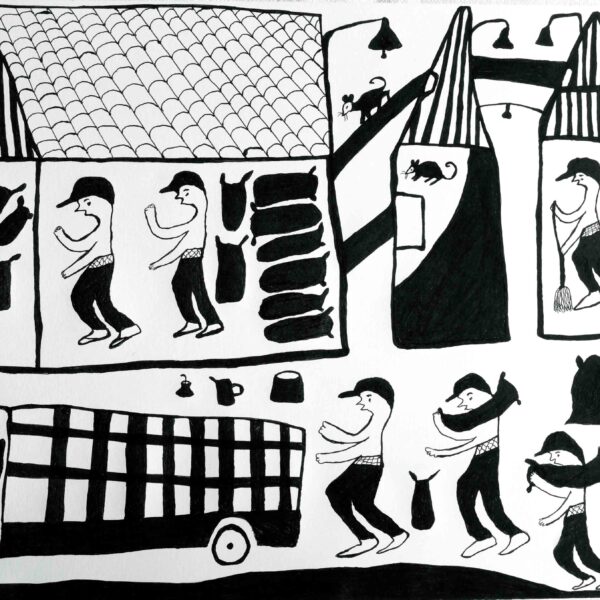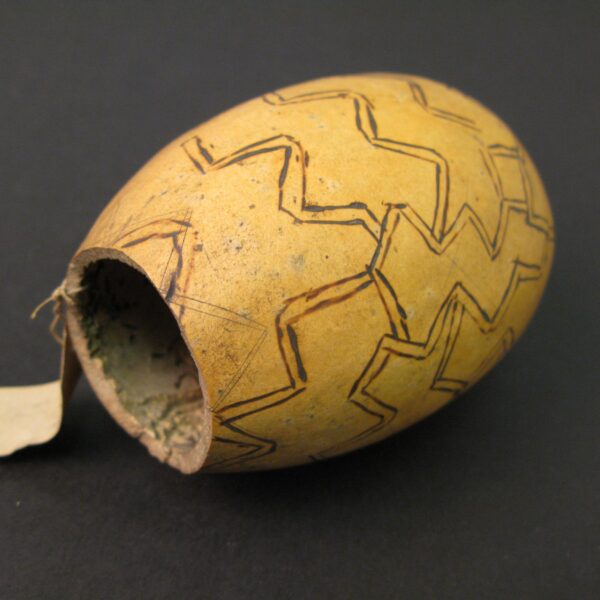Blog [EVENT] Paraguayan artists present new artworks at online open studios
At three online open studios over the next few weeks, a group of Paraguayan artists will present new works created as a result of a project with the British Museum where they interacted with more than 600 objects from the Paraguayan Chaco that have never been exhibited.
‘Collection, Mission, Colonisation: Encounters and Entangled Histories from the Chaco‘ is a collaborative project carried out with SDCELAR. It is inspired by a collection that comes mainly from the Enxet people in the south of the Paraguayan Chaco, acquired by Anglican missionaries, Wilfrid Barbrooke Grubb and Seymour Hawtrey at the end of the 19th century.
Artists, researchers and curators from the Paraguayan Chaco came together with the aim of unravelling and clarifying the impact of the mission and colonisation processes in the Gran Chaco, and showing contemporary local Enlhet, Nivacle, Guarani and Mennonite responses to these impacts.
In these three open online studios, artists will present their works and reveal the foundations of their creative response to this British Museum’s collection in prints, photographs, digital illustrations, and drawings.
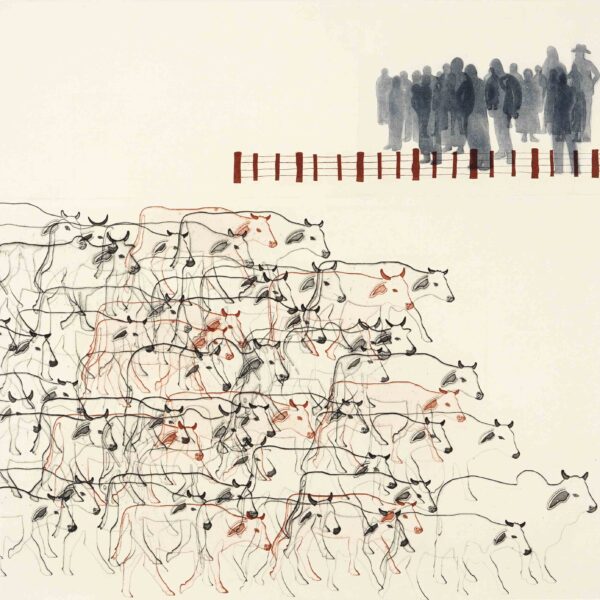
'Exploitation' by Miriam Rudolph
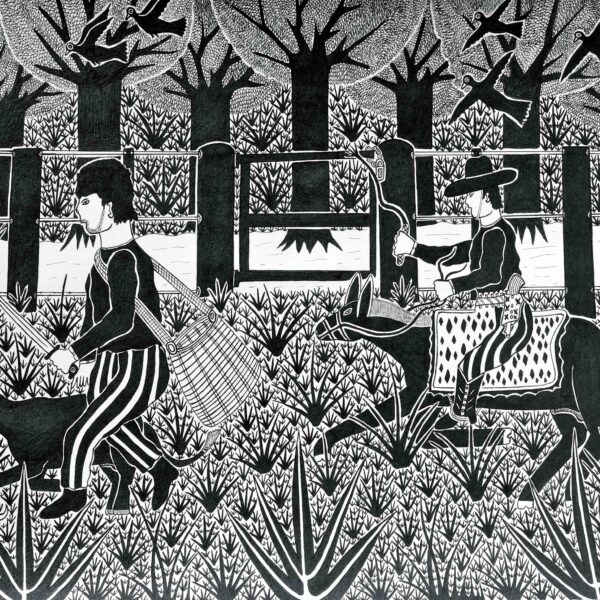
© Efacio Álvarez
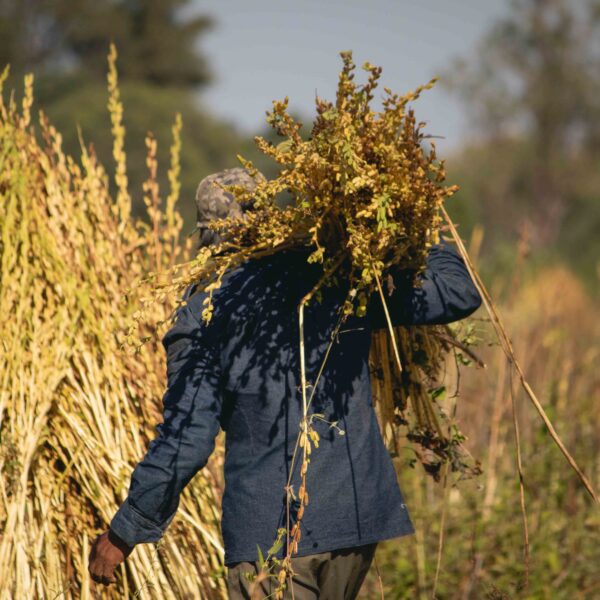
© Lantooy Unruh
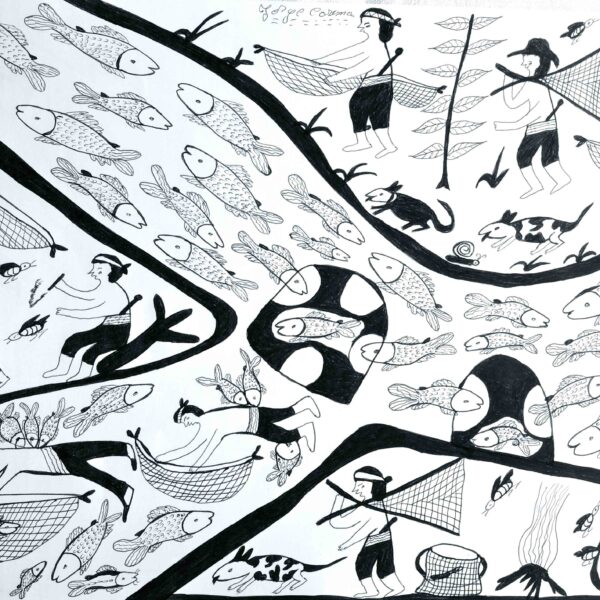
© Jorge Carema
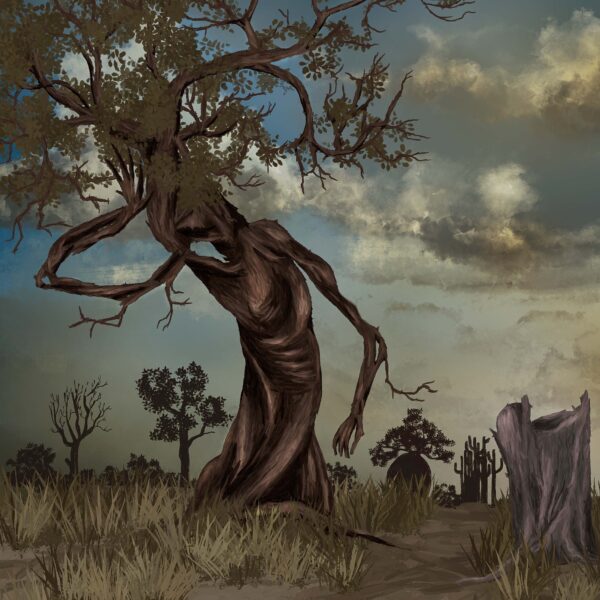
©Lantooy Unruh
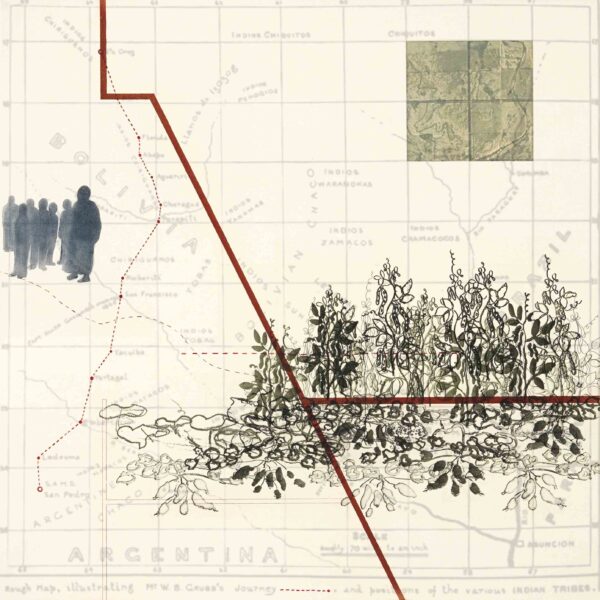
´Roads' by Miriam Rudolph
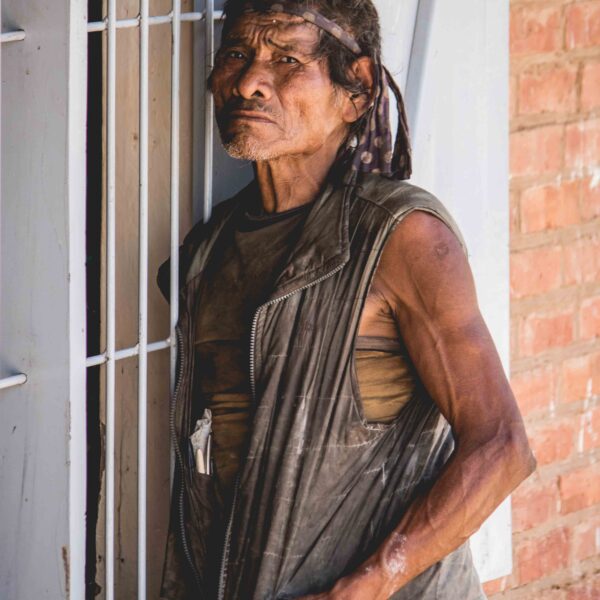
© Lantooy Unruh
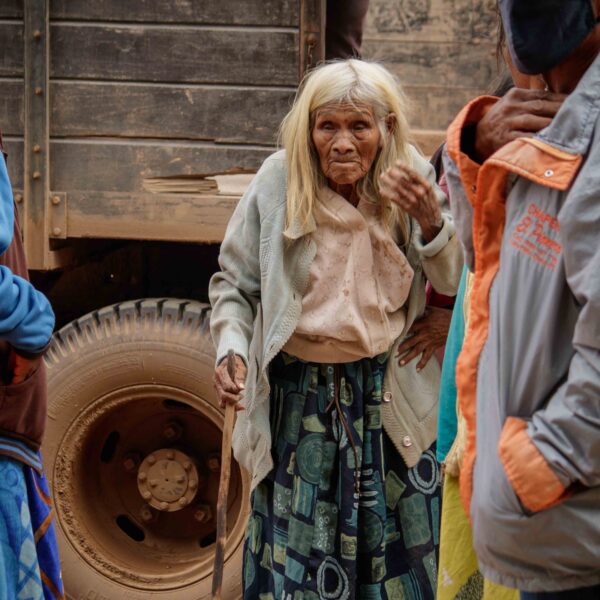
© Lantooy Unruh
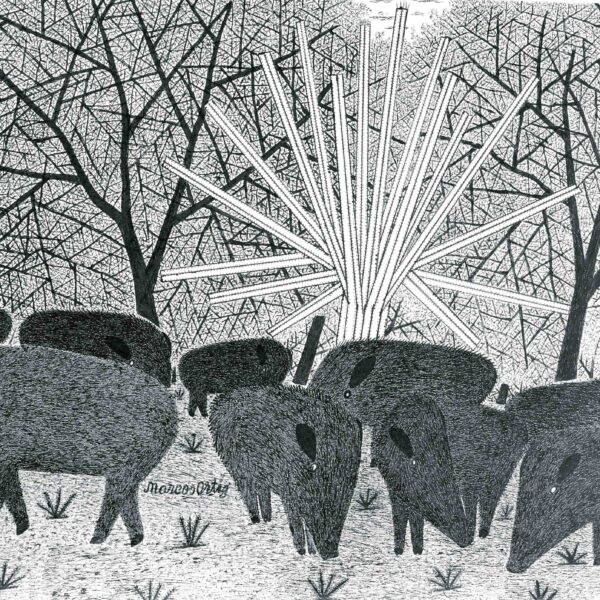
© Marcos Ortiz
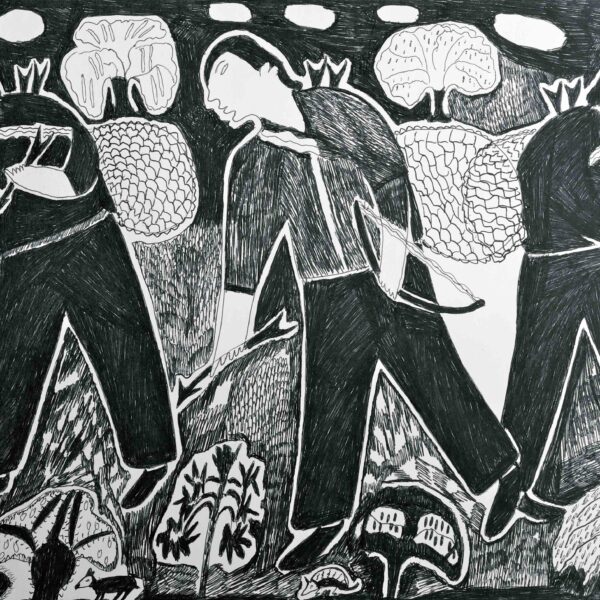
© Osvaldo Pitoe
In her series of prints, Miriam Rudolph explores the complexities of colonisation in the Chaco region: “I spent several months reading first-hand accounts by the missionaries, journal publications, and academic papers, publications by Mennonite settlers and scholars, as well as accounts by indigenous elders of their displacement process, in order to gather information that later informed my images and became part of the content in the form of text excerpts.”
The artists in the Indigenous collective ‘Living Arts’ – Osvaldo Pitoe, Jorge Carema, Efacio Álvarez, Marcos Ortiz, Esteban Klassen and Clemente Juliuz (1972-2021)- in collaboration with anthropologists Ursula and Verena Regehr, created a series of drawings inspired by the objects from the collection. In their drawings, they recall historical ways of living in the Chaco, and show the contemporary life of the Nivacle and Guarani Peoples.
For Enlhet artist, Lanto’oy ‘Unruh, his digital illustrations and photographs seek to show the reality of his community: “It is important for me to give visibility to the People I belong to because we are also here, my Indigenous People. In the context of a complex correlation between seeing and saying, between perception and expression, I explore forms of expression and the creation of meanings”.
You can read more about the artists and the project at this link.
Open studios
The online free open studios will be hosted by the British Museum on Zoom. They will have simultaneous interpretation (Spanish and English). Subscribe to each of the events by entering the links below.
Miriam Rudolph- Thursday, March 24 – 6 pm London (GMT)
Indigenous collective ‘Living Arts’ – Thursday, March 31 – 6 pm London (GMT+1)
Lanto’oy’ Unruh – Wednesday, April 6 – 6 pm London (GMT+1)
About the artists
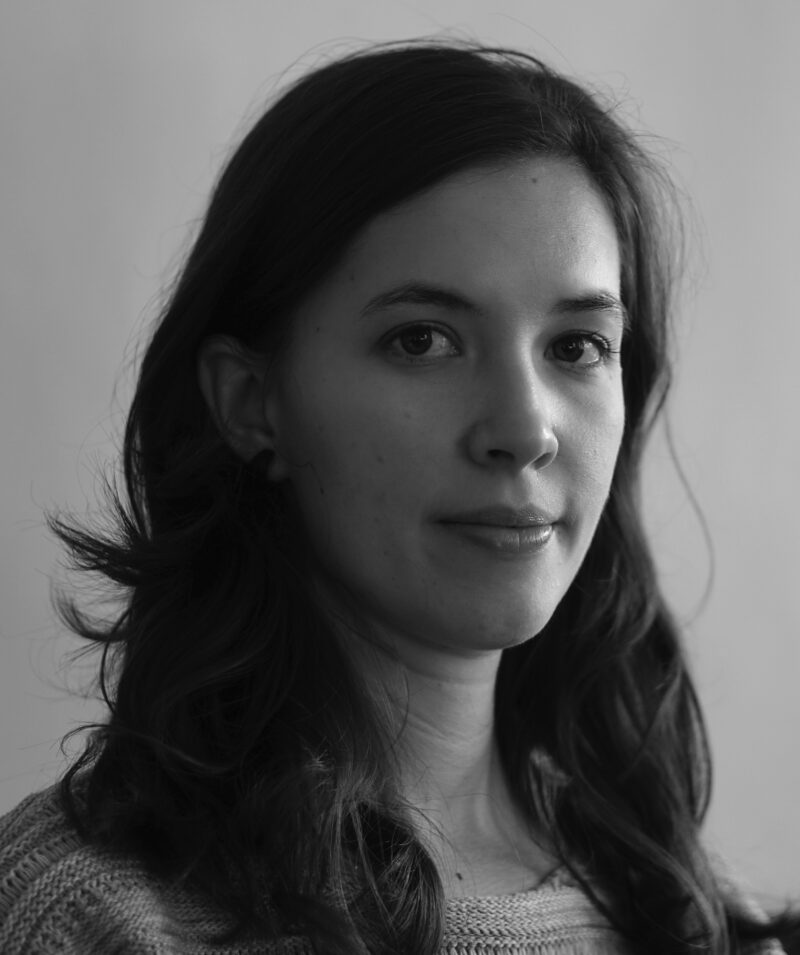
Miriam Rudolph
Miriam Rudolph was born and raised in Paraguay. In 2003 she moved to Canada to study Fine Arts at the University of Manitoba where she graduated with a Bachelor of Fine Arts Honours in 2007 and a Bachelor of Education in 2010. She completed a Master of Fine Arts in Printmaking at the University of Alberta in 2017. She has received numerous scholarships, awards, and grants. She has shown her work nationally and internationally in Canada, the USA, Paraguay, Portugal, Spain, Croatia, Taiwan, and China. She is happily settled in Winnipeg with a home studio, a printing press, a big vegetable garden, her husband and child.
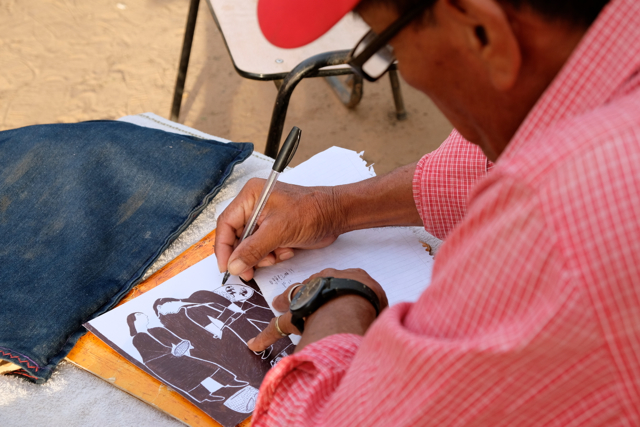
Osvaldo Pitoe
Osvaldo Pitoe, Jorge Carema, Efacio Álvarez, Marcos Ortiz, Esteban Klassen and Clemente Juliuz (1972-2021) are self-taught artists. They are members of the Guaraní and Nivacle linguistic groups and live in the Cayin ô Clim and Yiclôcat settlements on the outskirts of the Neuland Mennonite colony in the Paraguayan Chaco. Since the end of the 90s they have been drawing with black pens on paper and over the years they have developed their own styles and motifs. This new drawing practice emerged in collaboration with anthropologists Ursula and Verena Regehr, who have promoted this collective through exhibitions and publications in Paraguay and abroad. Read more about each of the artists in this link.
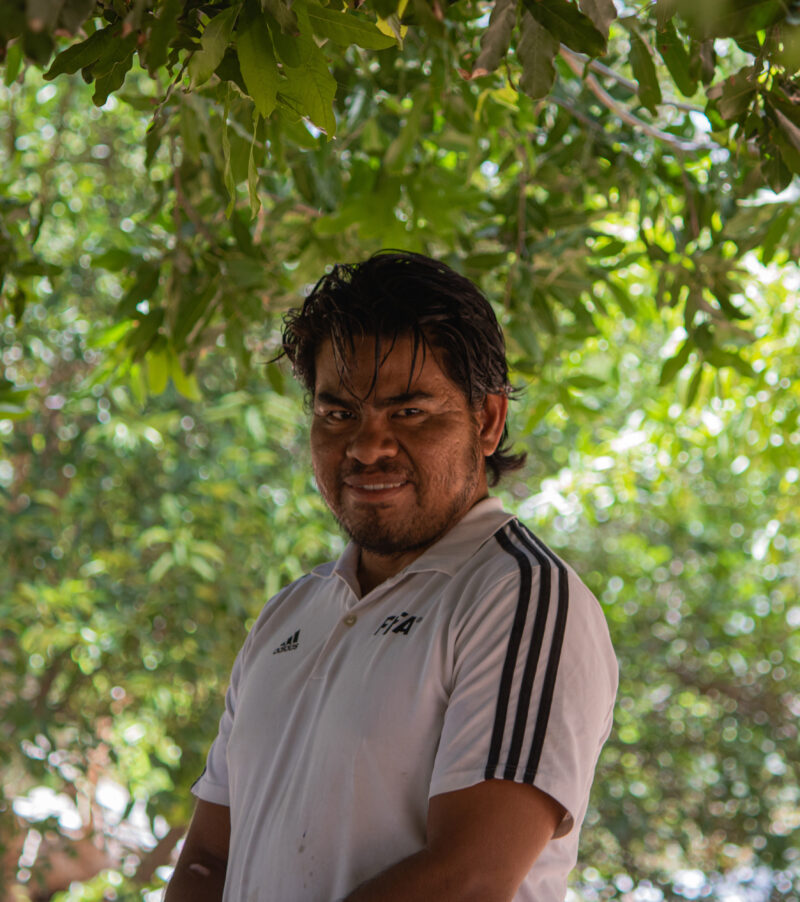
Lantooy Unruh
Lanto’oy’ Unruh (Paraguay, 1988), also known as Ronaldo Unruh, is an artist from the Enlhet Ya’alve-Saanga community in the Paraguayan Chaco. Through digital illustration, photography, oil painting, and video, he expresses his views on the importance of preserving the beliefs and traditions of the Enlhet community, and the natural environment. Some of his works are currently on display at the Museo del Barro in Asunción, and his illustrations have been published in the book ‘Sounds of the Rainforest’ (Alianza, 2019). He is also part of the Instituto Nengvaanemkeskama Nempayvaam Enlhet (‘Make our Enlhet language grow’), a space for reflection which promotes the Enlhet language and culture.
